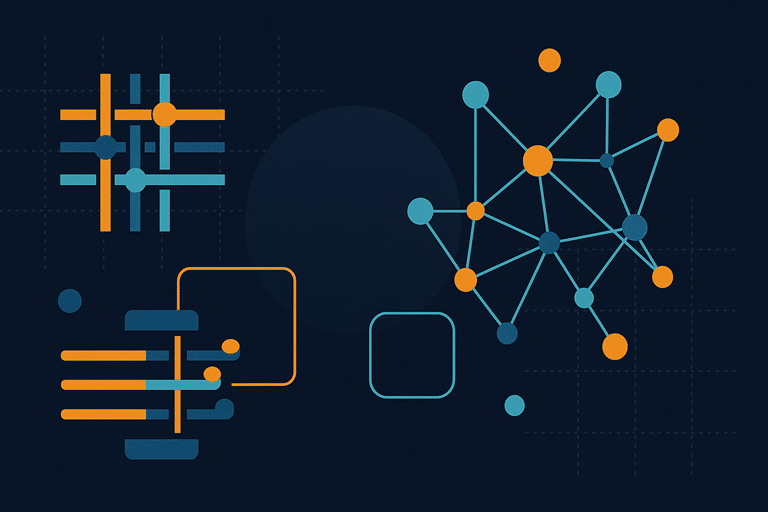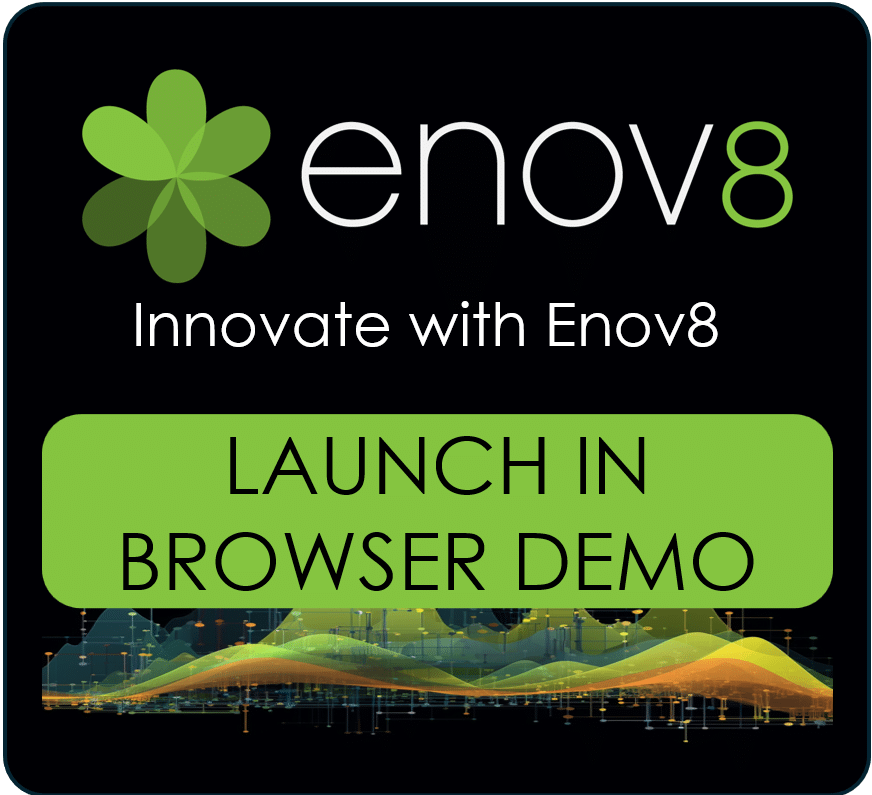
When evaluating modern data architecture strategies, two terms often come up: data fabric and data mesh. Both promise to help enterprises manage complex data environments more effectively, but they approach the problem in fundamentally different ways.
So what’s the difference between them?
Can they work together? Are they like Highlander Immortals and “there can be only one?” And which should you choose for your organization?
This article answers those questions by defining each term, comparing their core characteristics, and helping you decide which strategy best aligns with your business and technical goals.
What Is a Data Fabric?
A data fabric is a technology-forward architecture that provides a unified, intelligent layer of data integration and access across complex, distributed environments.
It enables enterprises to connect disparate data sources—on-premises, in the cloud, and across hybrid infrastructures—and make that data accessible in a consistent, governed manner. It typically emphasizes automation, metadata management, and centralized control to ensure real-time visibility and usability of enterprise data.
For example, an enterprise might use a data fabric to seamlessly access customer data across multiple systems (ERP, CRM, data warehouse) through a single, governed layer—without physically moving the data.
What Is a Data Mesh?
A data mesh is an organizational and architectural paradigm that decentralizes data ownership to domain-specific teams.
Rather than having a centralized data function own all enterprise data, each domain (such as marketing, sales, or product) owns its data as a product, including its quality, accessibility, and lifecycle.
Data mesh aligns data architecture with the structure and agility of modern, cross-functional organizations.
Originally coined by Zhamak Dehghani, data mesh emphasizes treating data as a product and embedding interoperability and governance into domain-level responsibilities, supported by self-serve infrastructure and strong platform capabilities.

Data Fabric vs Data Mesh: Key Differences
Let’s compare the two approaches across critical dimensions.
1. Architecture Style
Data fabric is built around a centralized architecture that emphasizes consistent access to data through integration layers and shared governance. It typically involves a unified control plane powered by automation and metadata management, offering a top-down approach to solving data sprawl.
In contrast, data mesh is decentralized by design. It distributes architectural responsibilities across business domains, allowing each team to build, deploy, and manage their own data products. While this enables organizational agility and ownership, it introduces complexity in maintaining consistency and interoperability across the system.
- Strengths of data fabric: Strong control, consistency across systems, real-time integration.
- Strengths of data mesh: Enables decentralized scaling, aligns with agile team structures.
2. Governance and Compliance
With data fabric, governance is built into the system centrally. Policies, lineage, access controls, and quality rules are embedded and enforced across the enterprise through a shared metadata layer. This makes it easier to comply with regulatory requirements, especially in heavily regulated industries.
Data mesh takes a federated approach to governance. Each domain is responsible for applying governance policies to their own data products. This decentralization enables flexibility and domain-specific compliance strategies, but it requires strong coordination mechanisms and clear standards to prevent fragmentation or risk exposure.
- Strengths of data fabric: Centralized compliance enforcement, holistic metadata strategy.
- Strengths of data mesh: Domain-specific policy flexibility, encourages accountability at the edge.

3. Data Ownership and Responsibility
In a data fabric approach, data ownership and maintenance typically sit with centralized data engineering or IT teams. These teams manage data pipelines, resolve quality issues, and ensure availability across systems. The upside is uniform standards and accountability, but this can lead to bottlenecks and scale limitations.
Data mesh shifts ownership to domain teams, who treat data as a product. Each team is responsible for the end-to-end lifecycle of their data—including design, quality, and access. This model encourages innovation and accountability but demands that domain teams have the skills and resources to manage data independently, which may not always be the case.
- Strengths of data fabric: Centralized support, standardized practices, fewer skill gaps.
- Strengths of data mesh: Clear domain accountability, fosters innovation and autonomy.
4. Scalability and Flexibility
Data fabric scales technically by integrating diverse data sources across environments using unified platforms and metadata intelligence. It is flexible in terms of technology but may struggle to adapt quickly to evolving organizational structures or team-level priorities.
Data mesh scales organizationally. By empowering multiple autonomous teams, it enables parallel innovation and responsiveness. However, without strong governance and infrastructure standards, mesh implementations can become inconsistent and difficult to manage at scale.
- Strengths of data fabric: Excellent data source integration, supports large-scale analytics.
- Strengths of data mesh: Organizational scalability, parallel development across domains.
5. Organizational Fit
Data fabric often works well in organizations with hierarchical or centralized IT models, where strong governance, risk mitigation, and tight control over data movement are priorities. It aligns with enterprises that prefer top-down standardization.
Data mesh is better suited for organizations with decentralized or domain-driven cultures—often digital-native companies or those pursuing agile transformation. It thrives where cross-functional teams have autonomy and the ability to manage their own infrastructure and services.
- Strengths of data fabric: Suits legacy systems, centralized enterprises, regulated industries.
- Strengths of data mesh: Ideal for digital-native orgs, agile teams, fast-paced innovation.
6. Tooling and Ecosystem
Data fabric solutions are generally delivered through commercial platforms—such as Informatica, IBM Cloud Pak, or Talend—that provide end-to-end capabilities, including data cataloging, lineage, integration, and governance.
Data mesh, by contrast, is not a product but a philosophy. It requires organizations to piece together infrastructure components—such as data catalogs, event streaming, observability, and platform-as-a-service—around mesh principles. This do-it-yourself nature allows for customization but increases complexity and time-to-value.
- Strengths of data fabric: Pre-integrated toolsets, vendor support, faster time-to-value.
- Strengths of data mesh: Flexibility to choose best-in-class tools, tailored infrastructure design.

Can You Use Data Fabric and Data Mesh Together?
Yes.
These are not mutually exclusive. In fact, a data fabric can support a data mesh by providing the foundational connectivity and governance layers that domains then build on.
For example, a company might implement a data fabric to provide standardized data access and metadata management, while empowering individual teams to own their data products within that ecosystem.
Which Should You Choose?
The right choice depends on your organization’s structure, culture, and maturity.
- If you’re a regulated enterprise with a strong central IT team, data fabric may offer the consistency and control you need.
- If you’re a fast-moving tech company with empowered domain teams, data mesh might be the better fit.
- Many modern organizations can benefit from a hybrid approach, using a data fabric foundation to enable a federated, mesh-like model.
Want to see how a structured approach to data management could look for your team? Access a test data management plan.
Final Thoughts
Both data fabric and data mesh offer innovative ways to manage data at scale, but they solve different problems and reflect different organizational philosophies. Rather than choosing one over the other, consider how elements of both can work together to meet your data governance, accessibility, and agility goals.
For teams modernizing their IT environments and release processes, understanding these models can inform better decisions—and better results.

